Russian Doll ending explained - every unanswered question, story thread, and time loop
Let's take a spoiler-filled look at the Russian Doll ending and what it could mean for a potential second season
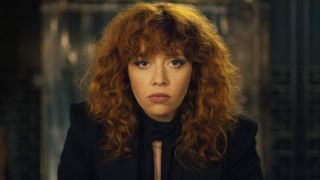
Russian Doll, a brand new Netflix TV show, is out now, taking another stab at putting an innovative spin on the classic Groundhog Day time loop storytelling mechanic. And, oh boy, what a good job it does. Natasha Lyonne (of Orange is the New Black fame) plays Nadia, who keeps dying on the night of her own birthday party and reliving the same day over, and over, and over again. But it's when she meets Alan (played by Charlie Barnett) that things really get interesting - and totally brain-melting at times.
After you've inevitably binged the entire eight-episode season (and it'll only take you a gentle four hours, I might add), you're bound to have some questions about exactly what that Russian Doll ending really means. I know I did. Not only does it potentially pave the way for Russian Doll season 2, but it also leaves quite a lot of story threads wafting free in the breeze, so let's chat about them all in detail. Obviously, major story spoilers follow, so if you haven't reached the Russian Doll ending yet, you will absolutely want to avert your eyes.
1. What's the real story with Alan?
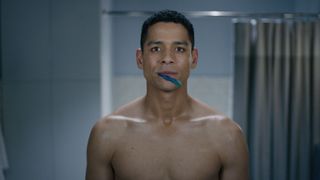
Throughout Russian Doll we learn a lot about Nadia's past. The issues with her mother and her death, how it felt for Nadia to deal with all that as a young girl, and her relationship with Ruth. But, beyond his relationship with Beatrice (and a little of his friendship with Ryan), we actually don't learn all that much about Alan - despite the fact that there's obviously deeper problems in his life. It's clear from his attention to detail in his home, some obsessive behaviours, and his cleanliness that he could have some form of OCD, but it's never really explained within the context of his life, or his time loops.
2. Who was the doctor Alan spoke to in episode 4?
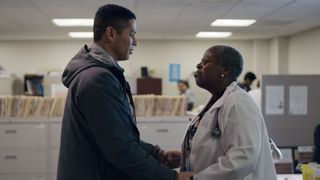
Tied into the above is the visit to the hospital in episode 4, where he asks to see a doctor who obviously knows him. It's never properly explained who she is, and she never appears again to flesh out her role in Alan's life. Well, after rewatching the episode, it turns out she's his mother. He says it very quickly and quietly when he first speaks to her, but it's definitely his mom. What's even more interesting is that her immediate reaction to his appearance isn't positive, but rather to ask him: "Aren't you meant to be at work? You can't skip work. You can't go skipping work again." The entire episode is called Alan's Routine, which only serves to fuel the idea that Alan has some kind of behavioural issues that his mother is no doubt privy to.
3. Why did Ryan talk about Alan's Inner Circle?
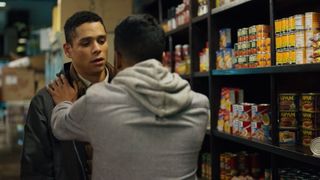
Again linked to the idea that Alan has deeper-seated troubles that have influenced the breakdown in his relationship and his attempted (or should that be successful?) suicide, there's an odd moment in episode 8 where Ryan tries to protect Alan from Nadia (at the point where they're existing in different timelines). Ryan says, "He's in a bad way, Inner Circle only". This kind of friendship/relationship pattern can be common to those with forms of autism, where when things get really bad, they retreat and react well only to those that they trust. Obviously for Alan, Ryan is one of those people, but it poses more questions about Alan's backstory than Russian Doll answers across the eight episodes.
4. Why were Nadia and Alan chosen or become connected in the first place?
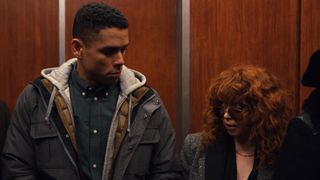
The lack of clarity around Alan's backstory also ties into the question as to why the two characters are thrown together in this mad time loop series anyway. Yes, they were capable of saving each other in some way after their interaction in Ryan's shop, but in the grand scheme of fate and reality, that feels far too inconsequential to link them in such a powerful, catastrophic way. Perhaps it's a question of destiny and the pair are going to be together forever - although I wouldn't want to try and explain how their romance started if there were ever any children to tell - but it's odd that these two random strangers are suddenly linked so inexplicably. Unless…
5. Is Oatmeal actually secretly some kind of time lord?
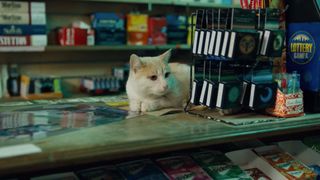
Now this might sound like a bit of a stretch, but stranger things have happened. Nadia's cat, Oatmeal, has been missing since episode 1. Well, actually Nadia sees him in the middle of episode 1, and it's when she tries to cross the road to go and get him that she's hit by the taxi that (first) kills her. Coincidence? Maybe not.
Sign up for the Total Film Newsletter
Bringing all the latest movie news, features, and reviews to your inbox
"My cat's gone. Not gone, gone, but he hasn't been back in three days. Usually if he wanders off he's back at my place or the deli within 48 hours max," says Nadia in episode 1 before her death to her friends Maxine and Lizzy.
When they suggest he's dead, she says: "Fundamentally, he's a deli cat. He's survived more than the three of us can imagine." And then, when Lizzy suggests making him a house cat, she exclaims: "I don't believe in dictating the boundaries of a sentient being's existence. For you, it's safety, for me and Oatmeal, it's a prison."
Isn't it strange that Nadia is then trapped inside her own endlessly looping time prison for the next seven episodes? Well, she finds him again on her second time loop (still in episode 1), only for him to strangely disappear just before her second death, which is caused by her falling backwards into the river as she tries to look for him. That's two to Oatmeal.
Now, we don't see Oatmeal again properly until episode 8, aside from when he pops up with Horse - more on him in a minute - in the park at night. Now that gets my mind working on a theory, as because he lives in the deli, he's another thing connecting Alan and Nadia beyond sheer happenstance, and the fact he's the cause of Nadia's initial death and then reappears as they figure out how to fix the time loops to me suggests that he's somehow involved in all of this. Is that totally mad?
6. Or is it Horse?
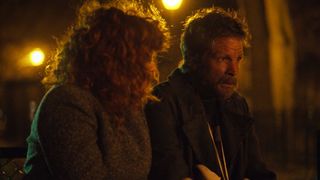
The homeless man who seems to feature in every episode of Russian Doll, Horse, could also be a key to what's going on with Nadia and Alan. He plays a role in both of their lives, only appears in the night time and eventually leads the parade that closes out the season. Plus, if you want to go down the time manipulating cat route, he's also seen with Oatmeal in one of the timelines. Leslye Headland (who wrote, produced and directed the series), said in an interview with Polygon that Horse is intended as something bigger than just some guy.
"I hope I don’t sound too hippy-dippy, but it’s truthfully this thing where whenever we talked about Horse — and Horse was a character that Natasha [Lyonne] pitched and Natasha really brought to life and kind of molded out of clay — but to me, Horse was always the moon tarot card to her tarot reader. He’s the subconscious self. He’s this other part of her that she can dip into at any time and join at any time, and he’s both dangerous and a positive, kind of protective character. But he’s neither creation nor destruction. If Alan is her double within the timelines, I feel like Horse is almost a subconscious or unconscious manifestation."
7. Where on earth does that parade in the last episode come from?
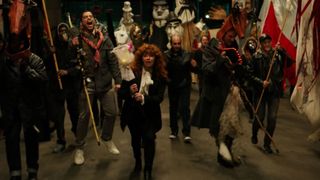
Not only have the homeless troops of Central Park suddenly mobilised into some kind of walking group, but they've also got instruments, weird masks and, even more interestingly, some are carrying sticks on which they've mounted broken mirrors - particularly broken car wing mirrors. Mirrors have been an interesting element of the entire series, so is it significant that this homeless troupe are now wielding them? Is it some kind of celebration of them finally breaking the cycle? Or something bigger altogether?
8. What was the obsession with mirrors all about?
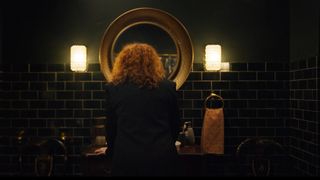
Which leads me nicely onto exactly how big a part mirrors play in the series as a whole. There's a theme of therapy and fixing ourselves through help throughout all of Russian Doll, and a huge part of this is the ideas of mirrors being a reflection of ourselves. It's especially prominent because both Nadia and Alan's time loops start with them staring into a mirror - Nadia in the bathroom of Maxine's apartment, and Alan brushing his teeth in his own home.
"The mirrors. Don't get me started on the mirrors. One day, she shattered them, and when I came to take Nadia to school, well, the mirrors were gone. There was glass everywhere. I think there were even shards in your [Nadia's] hair."
When Alan asks "Why mirrors?", Ruth gently replies "Reflection. Proof of existence? Another pair of eyes. See, that's why therapists are important. Without them, we are very unreliable narrators of our own stories."
Perhaps this is why it's so important that Nadia and Alan start off their time loops looking at themselves, but also why when things start disappearing, the mirrors are one of the first things to go. Without them, they are incapable of seeing themselves, proving they exist, and that's when they rely on each other the most.
9. Did the original Nadia and Alan finally find each other at the end?
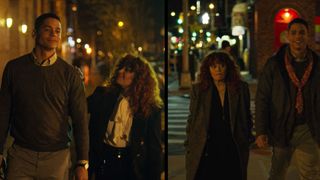
The last episode does a good job of letting you know very visually which is the 'original' Nadia and Alan for when they eventually end up on different timelines. Alan gets given a red scarf by Lizzy's latest lover, while Nadia is forced to change into an almost Shakespearean white shirt after Maxine throws a drink over her. It clearly demarcates them from the alternate timeline versions of themselves.
So, when the pair are walking towards the camera with the madness of the parade behind them, you see the original Alan and Nadia are together again, rather than the two pairs that we've seen throughout episode 8. Does this mean that they've found each other again? Or do the two separate timelines still exist? Could it be that we see both extend into a second season, or is this the conclusion both have been hoping for?
Interestingly, in that same interview with Polygon, Leslye Headland said that the parade at the end of the series isn't a sign that the pair are now immortal.
"At the end of the season, we're not like, 'And now they're immortal!' I'm assuming those characters will die. Did they stop the loop, or were their minds just expanded a little bit more, and so now because they understand a little bit of what multidimensionality is, and the fact that we don't have just one reality, does that mean anything to them? Does it not? Because one side of the duo is enlightened and the other one isn't, does that mean they're destined for failure of does that mean they can come to the same kind of working together? The possibilities are endless."
Handily, that doesn't really explain exactly what's going on with Nadia and Alan at the end, but it does leave things very open for a second season of Russian Doll.
10. Why were there three versions of her at the end walking through the crowd? And only one of him?
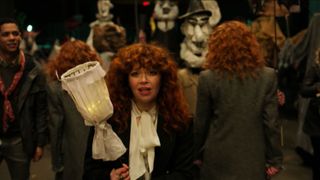
In the moment where it switches from a split screen presentation to showing the true versions of Nadia and Alan walking with the parade, you briefly see two other versions of Nadia walk into the mass of people. What you don't see though is multiple versions of Alan moving through the crowd. What does this mean for their timelines? Do multiple Nadia timelines now exist? And if so, why isn't it the same for Alan? He's lived that day/night just as many times as she has after all.
11. What was going on with the fruit?
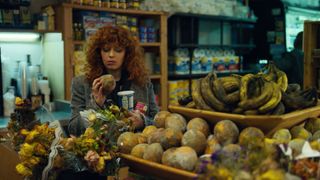
One of the most obviously odd elements (aside from the whole dying a lot thing) in Nadia and Alan's lives is the fruit that you'll see both in their homes, and other places they visit. As they progress through the time loops, the fruit begins to rot, gathering thicker and thicker mould, but when Nadia cuts into an orange in episode 7, she reveals that it's still ripe inside. That's because the pair are experiencing time differently to normal people. While in their own heads, they remember each day as a new one and are experiencing a basically linear time progression - albeit the same day looping infinitely - elsewhere they are frozen in time. The aging, progressing external skin of the fruit therefore represents Alan and Nadia as we know them, whereas the internal ripeness of the fruit is the world, frozen in time, around them. It's this that's the key to them figuring out how to fix things at all. Turns out fruit is good for you on so many levels.
12. Why were people disappearing?
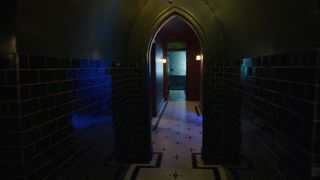
As the speed of the time loops restarting increased, things and eventually people begin disappearing from their respective days. Was this the world ending? Just a figment of their imagination? Well, I believe it was because the days had looped too many times, and they were beginning to collapse. It felt like the pair were racing against time itself to figure out exactly how to put things right in their lives again, and losing the people was almost like a warning sign that time was running out.
13. Did *that* song have significance?
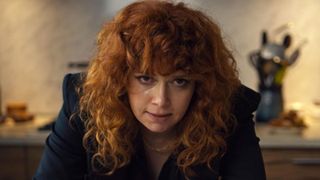
Notice the song that was playing in Maxine's apartment every time Nadia's day restarted? It's actually a song called Gotta Get Up, which was the opening track on the 1971 album Nilsson Schmilsson by Harry Nilsson. Now that last bit isn't actually important (it'll just help you find it on Spotify, go on, you know you want to), but the lyrics are actually interesting, and include lines like "Gotta get up, gotta get out, gotta get home before the morning comes", and "There was a time when we could dance until a quarter to ten, We never thought it would end then, we never thought it would end". It's all about missing out on life, being late, and wanting to let people know that they are going to be late. And isn't that exactly the vibe of what's happening to Nadia and Alan?
Well, it actually was the thing that started the whole thing off.
“All the choices for music were really very important to me, and something that I spent a lot of time trying to make that an enjoyable experience for people,” Natasha Lyonne said in an interview with Indiewire. “That song is definitely the linchpin that sets it all off.”
14. How do you *actually* get past that pit of death in Nadia’s videogame?
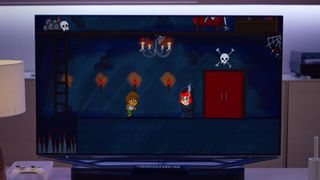
We saw Alan try and fail - multiple times - to get a key from Nadia’s easter egg character in the The Legend Ariadne, the first game she created. Every time he gives it a go he falls into a pit of spikes, which are apparently unavoidable (presumably the protagonist can’t jump). Then Nadia tried herself and couldn’t remember how to get the key either. In a show like Russian Doll where there’s significance behind almost everything, what does this inability to get past the obstacle in Nadia’s game mean?
Crucially (just like the last episode of the series) the game named The Legend Ariadne, a nod towards a mythical princess who helped Theseus escape from the Minotaur’s labyrinth by giving him a sword and a ball of thread to help him find the exit. So perhaps the game and this insurmountable obstacle reflects the impossible nature of Alan and Nadia’s quest to find a clear answer about why they’re stuck in an endless time loop - and how they will never truly escape the time-fuckery going on around them. Even though the answer about how to get past the pit of death is probably hidden somewhere in Nadia’s mind, just like how long it took for Nadia to confront her guilt about abandoning her mum, finding out how to beat her game is going to take a while.
15. Will we get Russian Doll season 2?

Not only do we need all the above questions answered, but I know I'm definitely not ready to let go of Nadia and Alan, and even Horse and Oatmeal too. Well, you can start to get excited, because there's a potential we could see more of Russian Doll, because of one quote from Lyonne herself in an interview with The Hollywood Reporter.
"We definitely pitched it as this three-season idea and yet it’s so interesting to think about how that shapes and morphs in the time since making it," said Lyonne. "Who knows if we’ll be lucky enough to go back down the rabbit hole. That’s tomorrow's question. But I think we have some ideas."
"What's such a good thing not only about this show but about the state of present-day television is that it can be so many things. I definitely have ideas that range from the really out-there anthology to staying on board with our friend Nadia."
"And maybe it’s all one idea. Certainly, what we pitched and the heart and soul of Russian Doll, I’d love to continue to get to work in that way. It’s very satisfying and kind of wild. I guess this is what they mean by Peak TV, that the creators are getting to actually make the things that for some crazy reason, the buyers and viewers are actually interested in and that those two things are suddenly aligned. The idea that they would conceivably follow us on that course, should we jump off that cliff, it's pretty fun to even consider the fantasy."
Where do I sign up?
Check out more of the best shows on Netflix with our breakdown of the top 25, or, if you're more of a film fan, why not take a look at the best movies on Netflix?

Sam Loveridge is the Global Editor-in-Chief of GamesRadar, and joined the team in August 2017. Sam came to GamesRadar after working at TrustedReviews, Digital Spy, and Fandom, following the completion of an MA in Journalism. In her time, she's also had appearances on The Guardian, BBC, and more. Her experience has seen her cover console and PC games, along with gaming hardware, for a decade, and for GamesRadar, she's in charge of the site's overall direction, managing the team, and making sure it's the best it can be. Her gaming passions lie with weird simulation games, big open-world RPGs, and beautifully crafted indies. She plays across all platforms, and specializes in titles like Pokemon, Assassin's Creed, The Sims, and more. Basically, she loves all games that aren't sports or fighting titles! In her spare time, Sam likes to live like Stardew Valley by cooking and baking, growing vegetables, and enjoying life in the countryside.
Most Popular




